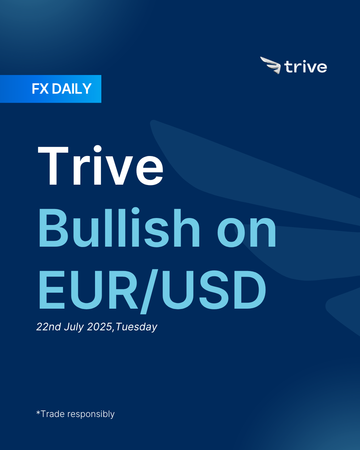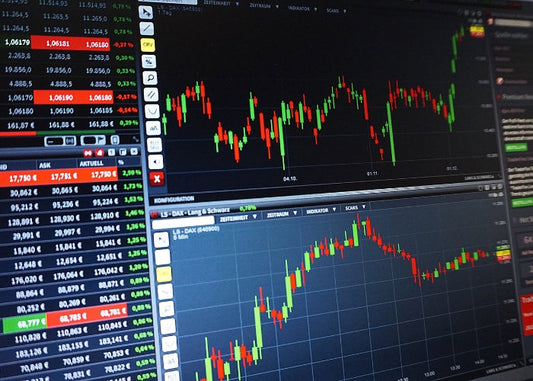FX Daily: Trive Bullish on USD/JPY

USD/JPY remains in a bullish trend, driven by rising US Treasury yields, policy divergence, and limited BoJ tightening. Despite brief safe-haven inflows on US political risks, the pair rebounded quickly as markets refocused on yield differentials and a resilient US economy. With Japan lose its majority in the Upper House of the parliament, JPY remains under pressure ahead.
JPY: Japain
The Japanese Yen spent the week reacting mostly to developments outside of Japan, with its value shaped by rising US Treasury yields and high-stakes political news coming out of Washington. For most of the week, the Yen weakened sharply, pushing USD/JPY above 149.00, reaching levels not seen in months as the interest rate gap between the US and Japan widened. The only moment of strength came mid-week when concerns about instability at the US Federal Reserve triggered a brief wave of safe-haven buying. At home, attention was focused on the upcoming Upper House election and how it could influence fiscal policy and trade talks with the US.
The lack of progress in trade negotiations between Japan and the US continued to weigh on the Yen. With President Trump’s deadline of August 1st for potentially imposing 25% tariffs still in place, Japanese officials remained cautious. Negotiators didn’t appear willing to make major concessions before this weekend’s election. Talks continued nonetheless, with Japanese Trade Negotiator Akazawa meeting US counterparts, including Treasury Secretary Scott Bessent, who visited Tokyo late in the week. Akazawa is also planning to travel to the US for more discussions next week. Secretary Bessent’s comment that “a good deal is better than a rushed one” suggested there could be some flexibility on the deadline.
Domestically, the Upper House election scheduled for July 20 was the central political story. Markets are weighing the possibility that the ruling coalition could lose its majority, which might push the government to adopt more flexible fiscal policies to gain support from the opposition. That political uncertainty has already affected bond markets, driving long-term Japanese government bond yields higher, with the 20-year yield touching its highest level since 2000 earlier in the week.
The ongoing political uncertainty and the global trade backdrop have also led to a pause in the Bank of Japan’s tightening path. The market is now pricing in only 15 basis points of rate hikes for the rest of the year. At the upcoming July 30–31 meeting, the BoJ is expected to raise its inflation forecast for the current fiscal year, largely because of rising food prices. However, it’s likely to keep future inflation forecasts unchanged and maintain its current policy rate at 0.5%, citing concerns over the possible economic impact of US tariffs.
Externally, the main factor driving the Yen’s weakness was the strength of the US dollar and rising Treasury yields. This rate gap pushed USD/JPY up to a high of 149.18 on Wednesday. But that same day, the Yen briefly strengthened after news emerged that President Trump was considering firing Fed Chair Jerome Powell. The report triggered a drop in US yields and a rush into safer assets like the Yen, pushing USD/JPY down to 146.92. However, this move quickly faded after Trump denied the story, and the upward trend in USD/JPY resumed.
The yen looks set to extend its weakness, driven by stubbornly high US Treasury yields that keep dollar funding lucrative. Weak wage growth and soft producer‐price data in Japan have offered little support, while the BoJ shows no clear path to higher rates. Political uncertainty at home and stalled trade talks with the US are weighing on sentiment, limiting safe-haven demand and keeping the Bank of Japan cautious about further tightening, factors that support a bearish outlook for the Yen.
USD: Limited bounce
The US Dollar had a turbulent week, caught between growing signs of tariff-driven inflation and a dramatic political standoff over the Federal Reserve’s independence. The DXY index started the week strong, continuing its previous momentum as President Trump threatened to impose 30% tariffs on the EU and Mexico. Mid-week, the dollar gained further strength following a higher-than-expected US CPI report, but that momentum was cut short by rumors that President Trump was preparing to fire Fed Chair Jerome Powell. Although the President quickly denied the claim, which helped reverse the sharpest market reactions, the situation exposed serious tensions around monetary policy. The dollar still ended the week higher, but with added political risk in the background.
Early in the week, inflation data gave mixed signals. Tuesday’s June CPI report triggered a hawkish reaction as Core Goods CPI rose 0.7%, its fastest monthly pace in nearly two years, suggesting that tariff costs were starting to show up in consumer prices. But the following day, the Producer Price Index came in softer than expected, with the core monthly figure flat. This helped cool immediate concerns about inflation, and analysts lowered their forecasts for the Fed’s preferred gauge, Core PCE.
On Thursday, strong economic data pointed to a resilient consumer. June Retail Sales came in well above expectations, rising 0.6% compared to the 0.1% forecast, and jobless claims fell unexpectedly. However, Friday’s University of Michigan survey showed that while consumer sentiment improved, inflation expectations dropped noticeably. Business inventories in May remained flat, suggesting lukewarm momentum on the business side.
The most dramatic development came on Wednesday with reports that President Trump was considering firing Fed Chair Jerome Powell. Markets reacted strongly, with the dollar falling and bond yields dropping on fears that the Fed’s independence was at risk. Although Trump later said it was “highly unlikely” he would actually fire Powell, he also reiterated his wish to appoint someone new when Powell’s term ends. The initial shock quickly faded, but the episode left markets unsettled.
Meanwhile, comments from Fed officials showed growing division within the central bank. Governors Lisa Cook, Michelle Bowman, and Philip Jefferson, along with regional Fed presidents like Loretta Mester, supported a patient and data-driven approach. They pointed to the solid economy and the temporary nature of tariff-related inflation as reasons not to rush into rate cuts. On the other hand, Governor Christopher Waller strongly advocated for a 25 basis point cut in July, arguing the Fed should act early to prevent economic risks from escalating and could ignore short-term tariff inflation.
Market pricing for Fed rate cuts moved up and down all week. After the hot CPI print, expectations for year-end cuts dropped below 45 basis points. The Powell rumors temporarily increased bets on more easing, but by the end of the week, markets were pricing in around 46 basis points of cuts by December. A move in July looked unlikely, but a cut by September remained a focus.
In the geopolitical front, tariffs dominated headlines. President Trump opened the week by threatening 30% tariffs on the EU and Mexico and 100% tariffs on Russia if a peace deal in Ukraine isn’t reached within 50 days. While the extended deadline on Russia was seen as a sign of de-escalation, the EU threat added tension to ongoing trade talks. Negotiations between US and EU officials continued all week but turned sour on Friday amid reports that Trump was demanding a minimum 15–20% tariff on all EU goods and rejected the idea of lowering existing tariffs on cars.
There was also a thaw in US-China relations, as the US approved some Nvidia H20 AI chip sales to China. Commerce Secretary Howard Lutnick linked the move to broader talks over rare earth materials.
Market sentiment shifted throughout the week. Early fears of rising inflation gave way to concerns about political risk and the independence of the Fed. The DXY index reached a high of 98.95 on Thursday, its strongest level since late June, supported by solid data. But it lost momentum after the Powell rumors and dovish comments from Governor Waller, finishing the week up around 0.6% but off its highs. The US Treasury yield curve steepened sharply on Wednesday as markets considered the possibility of a more dovish replacement for Powell, although that move mostly reversed after Trump’s denial.
In the near term, the USD may hold its ground or even extend gains, supported by a resilient US economy, consumer confidence has been rising since May, PMIs remain in expansion, unemployment is stable, and inflation remains sticky .. leaving the Fed in no rush to cut rates.
While markets are watching the potential for a change in Fed leadership, with some concern that a Trump aligned chair could weigh on the dollar, we believe the president’s influence over monetary policy would remain limited. As a result, we don’t view the uncertainty around Powell’s future as a high probability trigger for a sharp, sustained USD selloff.
That said, we maintain a bearish longer-term view, as most G10 currencies have outperformed the dollar year to date beyond what short-term fundamentals would justify, with portfolio flows becoming a dominant force. Europe, in particular, has benefited from reallocations away from US assets, and flows have recently explained more of the EUR/USD move than traditional cyclical factors. Unless new catalysts like deeper or earlier Fed cuts emerge, dollar depreciation may slow from here, but the broader trend still points to weakness as global investors continue to reduce their US exposure.
 USD/JPY 4H
USD/JPY 4H
Disclaimer
This material is provided for informational purposes only and does not constitute financial, investment, or other advice. The opinions expressed in this material are those of the author and do not necessarily reflect the views of Trive International. No opinion contained in this material constitutes a recommendation by Trive International or its author regarding any particular investment, transaction, or investment strategy. This material should not be relied upon in making any investment decision.
The information provided does not consider the individual investment objectives, financial situation, or needs of any specific investor. Investors should seek independent financial advice tailored to their individual circumstances before making any investment decisions. Trive International shall not be liable for any loss, damage, or injury arising directly or indirectly from the use of this information or from any action or decision taken as a result of using this material.
Trive International may or may not have a financial interest in the companies or securities mentioned. The value of investments may fluctuate, and investors may not get back the amount they originally invested. Past performance is not indicative of future results.
For more information about Trive International, please visit http://trive.com/int
Additional Information
Investing involves risk, including the potential loss of principal. Diversification and asset allocation strategies do not ensure a profit or guarantee against loss. The content in this material is subject to change without notice and may become outdated or inaccurate over time. Trive International does not undertake any obligation to update the information in this material.
By accessing this material, you acknowledge and agree to the terms of this disclaimer. If you do not agree with these terms, please refrain from using this information.
कोई टिप्पणी नहीं
Home
Trive
TriveHub





0 टिप्पणियाँ